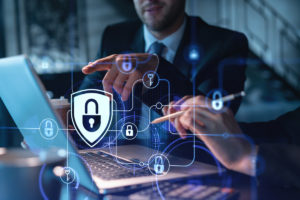
An Identity Access Control solution might be a collection of several processes and tools, including a network access control (NAC) solution. IT administrators use NAC solutions to control access to networks through capabilities such as policy lifecycle management, guest networking access, and security posture checks.
Identity Access Management (IAM) solutions can be delivered as cloud services or deployed on-premises, or they can be hybrid solutions–both on-premises and in the cloud. User roles and access privileges are defined and managed through an Identity Access Management (IAM) system. An IAM solution allows IT administrators to manage users’ digital identities and related access privileges securely and effectively. IT administrators can set up and modify user roles, track, and report on user activity, and enforce corporate and regulatory compliance policies to protect data security and privacy. Many businesses choose cloud-based applications for IAM because they are easier to implement, update, and manage.
Three of the most commonly used authentication factors for IAM are something that the user knows (such as a password); something the user has (such as a smartphone); and something the user is (a physical property, such as a thumbprint). A user typically needs to provide a combination of authentication factors for an authenticator application to confirm their identity and grant them access to the protected resources they are privileged to view or use.
Many organizations use two-factor authentication (2FA), which is a basic form of multi-factor authentication (MFA). The 2FA process requires a user to provide a username and password, and then enter a code generated by the 2FA application or respond to a notification on a device such as a smartphone. With a zero-trust model, you gain better visibility across your users, devices, networks, and applications, because you’re verifying their security states with every access request.
A passive approach to cybersecurity is no longer sufficient. Instead, deploying a proactive and multi-faceted strategy has become an integral aspect of business operations. Converged Technology Group has the breadth, depth, and experience to serve as your trusted security partner. Contact one of our cyber-security experts today at (631) 468-5770 to learn more.

